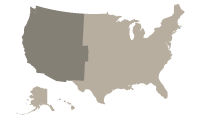
Pink Salmon
The smallest of the Pacific salmons, the average size of a pink salmon is 3-5 lbs. (1-2 kg).

Region
West
Catch ease
Easy
Habitat
Bay, River, Ocean
HOW TO IDENTIFY A PINK SALMON
At sea they are silvery, as are all salmons. They can be identified by the large, black, oval-shaped spots on both halves of the tail and large spots on the back and adipose fin. At spawning time the male is easily recognized by its extremely humpbacked appearance. The male develops a kype at spawning time. The body of breeding males is pale red or pink on the sides with brown to olive-green blotches.
WHERE TO CATCH PINK SALMON
The pink salmon is endemic to the Pacific and Arctic oceans, Bering and Okhotsk seas, the Sea of Japan, and the rivers that flow into these waters. It occurs from Alaska south to the Sacramento River, California, throughout the Aleutian Islands, and northeast into the MacKenzie River, N.W.T., Canada. It has been introduced to Newfoundland and to the western coast of Lake Superior and is maintaining populations in these locations. Since the introduction into Newfoundland there have been very sporadic reports of pink salmon in Labrador, Nova Scotia, and Quebec. It has spread through Lake Superior and is now spawning in tributaries of Lake Huron. The following list includes additional details on where to catch this fish:
| Backflow |
| Bays and Estuaries |
| Man-Made Structures |
| Ripples, Currents, Swirls and Sprays |
| Rock and Boulder Pockets |
| Dams and Falls |
| Eddies |
| Small Pointed Waves |
| Undercuts |
| Bays |
| Channel Entrances |
| Outsides of Bends |
| Rivers and Streams |
| Schools |
| Drop-Offs |
| Merging Currents |
| Standing Waves |
| Current Edges |
HOW TO CATCH PINK SALMON
The following are fishing methods used to catch this fish:
PINK SALMON LURES, TACKLE & BAIT
The following are lures, tackle or bait that can be used to catch this fish:
